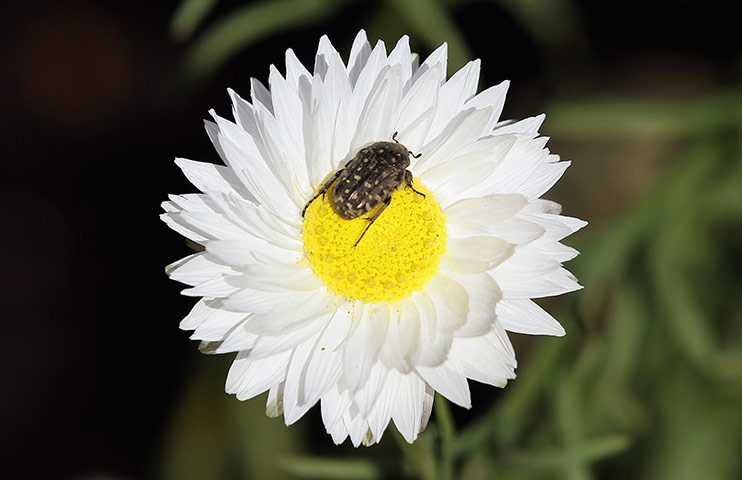TOP STORIES
Bird Flu Kills Wild Swans in SE Mongolia
Three swans found dead on a lake in south-east Mongolia, near the border with China, were infected with H5 subtype of the highly pathogenic avian influenza (HPAI) virus.
The veterinary authority sent an Immediate Notification dated 19 April to the World Organisation for Animal Health (OIE).
The report describes the finding of three Whooper swans (Cygnus cygnus) on 5 April at Zegst lake at Dariganga soum in Sükhbaatar province. The disease is reported to be subclinical and the birds have died.
The Poultry Site - www.thepoultrysite.com
20 Apr 2011
Location: Dariganga, Suhbaatar, Mongolia - Map It
>>>FULL ARTICLE
OIE Report
20 Apr 2011
Location: Dariganga, Suhbaatar, Mongolia - Map It

>>>FULL ARTICLE
OIE Report
Dead, injured pelicans appearing on Topsail beaches again
After months without reports, badly injured and dead pelicans have begun to show back up on Topsail Island over the last 10 days, according to officials. “We’ve had several calls and we have been responding and we are trying to figure out what may be causing the injuries,” said Sara Schweitzer, a biologist with North Carolina Wildlife Resources Commission.
In each incident, the otherwise healthy-looking birds had their wings broken, she said. Most of the birds reported to her have come from the southern end of Topsail Island.
“We were able to get one that was still alive — that was last week — and this week we have gotten one other (alive),” she said. “The wings were broken so badly we had to euthanize them.” Schweitzer said agencies, including N.C. Division of Marine Fisheries and the U.S. Fish and Wildlife Services, have been notified.
Jacksonville Daily News - www.jdnews.com
22 Apr 2011
S Ulbrich
Location: Topsail Island, North Carolina, USA - Map It
>>>FULL ARTICLE
22 Apr 2011
S Ulbrich
Location: Topsail Island, North Carolina, USA - Map It

>>>FULL ARTICLE
Satellite tracking of sea turtles reveals potential threat posed by manmade chemicals
 The first research to actively analyze adult male sea turtles (Caretta caretta) using satellite tracking to link geography with pollutants has revealed the potential risks posed to this threatened species by manmade chemicals. The research, published today in Environmental Toxicology and Chemistry, examines the different levels of chemicals in the blood of both migratory and residential turtles.
The first research to actively analyze adult male sea turtles (Caretta caretta) using satellite tracking to link geography with pollutants has revealed the potential risks posed to this threatened species by manmade chemicals. The research, published today in Environmental Toxicology and Chemistry, examines the different levels of chemicals in the blood of both migratory and residential turtles."The risks posed by persistent organic pollutants (POPs) remain largely a mystery for threatened loggerhead sea turtles," said lead author Jared Ragland from the College of Charleston, South Carolina. "A clear understanding of these risks is critical for wildlife managers trying to maintain both the health of reproductively active individuals and a sustainable population overall."
Twenty-nine turtles were captured near Port Canaveral, Florida and fitted with satellite transmitters as part of a National Marine Fisheries Service-funded project. Blood was analyzed for traces of organochlorine pesticides (OCPs), polychlorinated biphenyls (PCBs), polybrominated diphenyl ethers (PBDEs) and toxaphenes, chemicals documented to have carcinogenic and neurodevelopmental effects.
National Wildlife Health Center investigates animal diseases
In a basement laboratory, Carol Meteyer places a dead tri-colored bat on an elevated table. Covered in protective gear, she resembles a surgeon calculating where to make the first cut. Meteyer, a wildlife pathologist, is responsible for performing a necropsy — an autopsy for animals. Working with an assistant, she carefully slices paper-thin pieces from the bat's wing for testing.
The small bat, brought to the center from Indiana, shows remnants of white fungal growth on its body. Meteyer's job is to determine whether it perished from white-nose syndrome, a disease decimating bat populations across the United States.
"I really like the mystery of it," says Meteyer. "I think it's a privilege to be able to look at the animals on the table, look at all the tissues under the microscope, pull together what's happening, get the lab data and get that story. I like that creative part of it in addition to the intellectual challenge."
It's important work. As pollinators and consumers of insects, cave bats play an invaluable role in local ecosystems and agricultural industries. Meteyer and her colleagues at the National Wildlife Health Center in Madison are experts at identifying the fungus responsible for white-nose syndrome. It was the first lab in the country to do it.
OTHER WILDLIFE HEALTH RELATED NEWS
Photo courtesy of The Guardian - Week in Wildlife
 Oklahoma Department of Wildlife Conservation investigating death of young bald eagle [Yale, Oklahoma, USA - Map It
Oklahoma Department of Wildlife Conservation investigating death of young bald eagle [Yale, Oklahoma, USA - Map It  ]
]- Florida panther found dead in Seminole county [Seminole County, Florida, USA - Map It
 ]
] - Why are the Seychelles free of malaria?
- CWD not found in Pennsylania [Pennsylvania, USA]
- ProMed: white nose syndrome, bats - Request for Information
- Silent bat killer creeps closer to Illinois [Illinois, USA]
- Spreading bat disease will affect farmers, consumers




